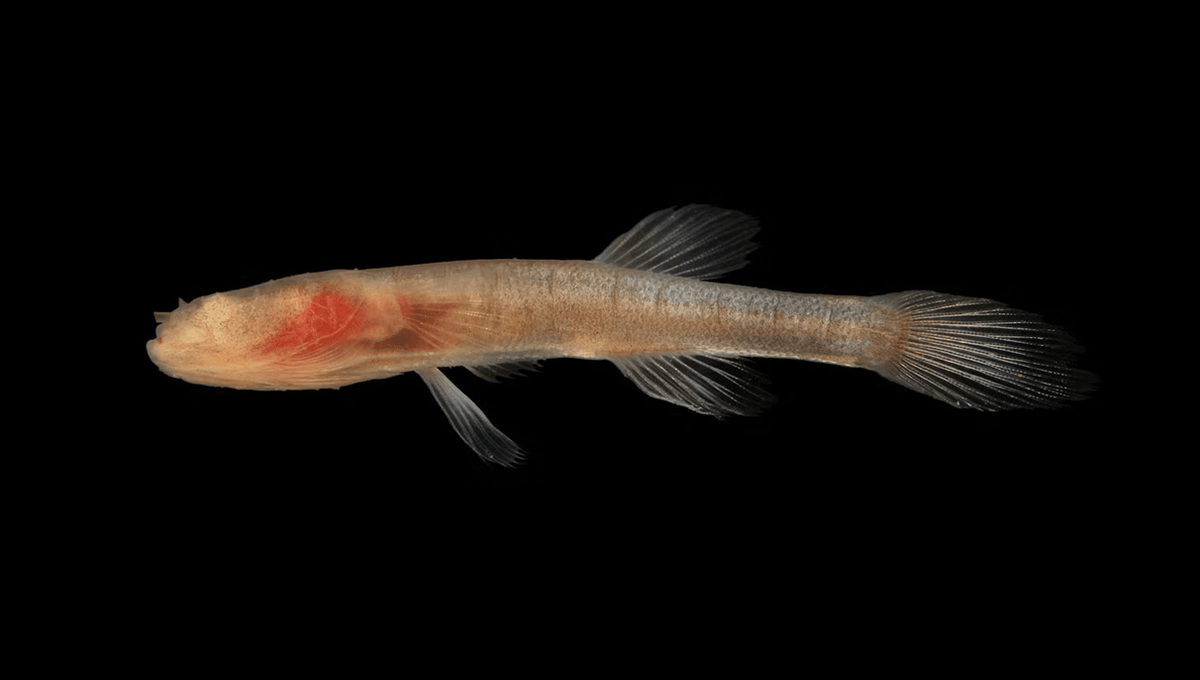
Eyeless, colorless fish inhabit the rivers running through caverns beneath the eastern and southern United States. Who needs eyes or a flashy appearance when you live in complete darkness? Remarkably, this trait evolved independently at least four times among cavefish, making them a striking example of convergent evolution in action.
Scientists at Yale University examined the DNA of all known amblyopsid cavefish species, paying close attention to 88 genes related to vision.
Hundreds of species of cavefish are found across all continents, except Antarctica, but this study focused only on Amblyopsidae, a family that dwells in the fresh waters of the eastern and southern regions of the US, most notably the Mammoth Cave National Park in Kentucky.
Their analysis revealed that different species of amblyopsid cavefish fall into at least four separate lineages that colonized caves independently after evolving from surface-dwelling ancestors.
However, they all likely descended from populations that already possessed adaptations to low-light environments, perhaps similar to today’s swampfish, a partially sighted amblyopsid that lives in murky wetlands.
Genetic blindness appears to have emerged between 2.25 and 11.3 million years ago in Ozark cavefish, and between 342,000 to 1.7 million years ago (at minimum) and 1.7 to 8.7 million years ago (at maximum) for other cavefish lineages.
Interestingly, the eyes (or lack thereof) are not the only shared traits in this family of fish. All species exhibit elongated bodies, flattened skulls, and either reduced or completely lost pelvic fins, all of which help them survive and thrive in dank, water-logged caverns.
This is all an example of convergent evolution: different species, separated by hundreds of thousands of years, all arriving at the same genetic solution to survive after being subjected to similar conditions.
Funnily enough, the researchers were able to find out when their respective cave was formed by looking at when the mutations for blindness started to become advantageous for the fish. This suggested that many of the caverns were much older than previous dating techniques implied.
“The ancient subterranean ecosystems of eastern North America are very challenging to date using traditional geochronological cave-dating techniques, which are unreliable beyond an upper limit of about 3 to 5 million years,” Chase Brownstein, the study’s co-lead author and a student in Yale’s Graduate School of Arts and Sciences, said in a statement.
“Determining the ages of cave-adapted fish lineages allows us to infer the minimum age of the caves they inhabit because the fishes wouldn’t have started losing their eyes while living in broad daylight. In this case, we estimate a minimum age of some caves of over 11 million years,” he added.
Cavefish may be very distant relatives of Homo sapiens on the evolutionary tree, but the researchers believe their findings could still inform human health.
“A number of the mutations we see in the cavefish genomes that lead to degeneration of the eyes are similar to mutations that cause ocular diseases in humans. There is the possibility for translational medicine through which by studying this natural system in cavefishes, we can glean insights into the genomic mechanisms of eye diseases in humans,” said Thomas Near, professor of ecology and evolutionary biology at Yale and senior author of the study.
The new study is published in the journal Molecular Biology and Evolution.
Source Link: Over 11 Million Years Of Evolution, Eyeless Cavefish Developed Blindness Independently Many Times